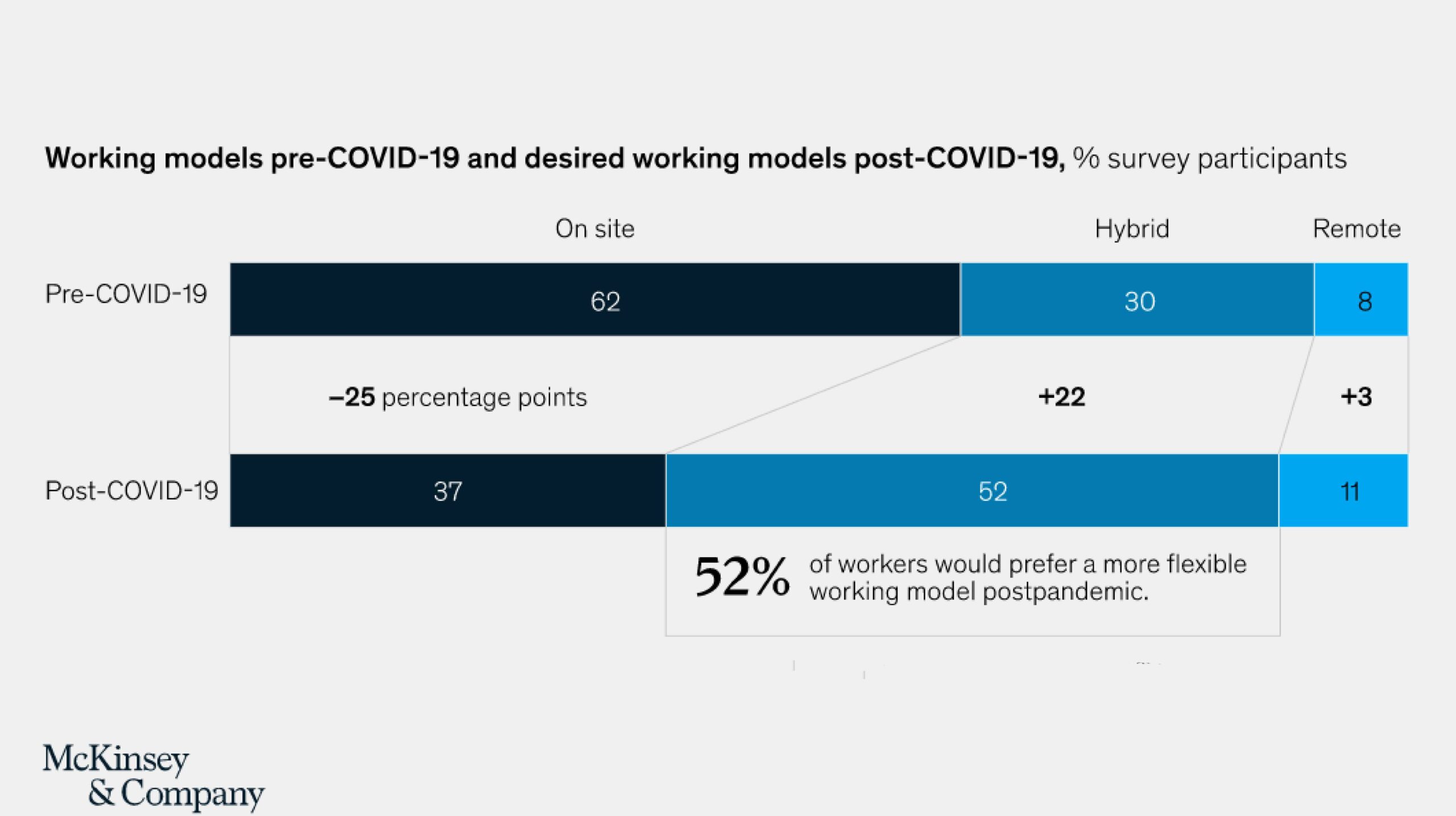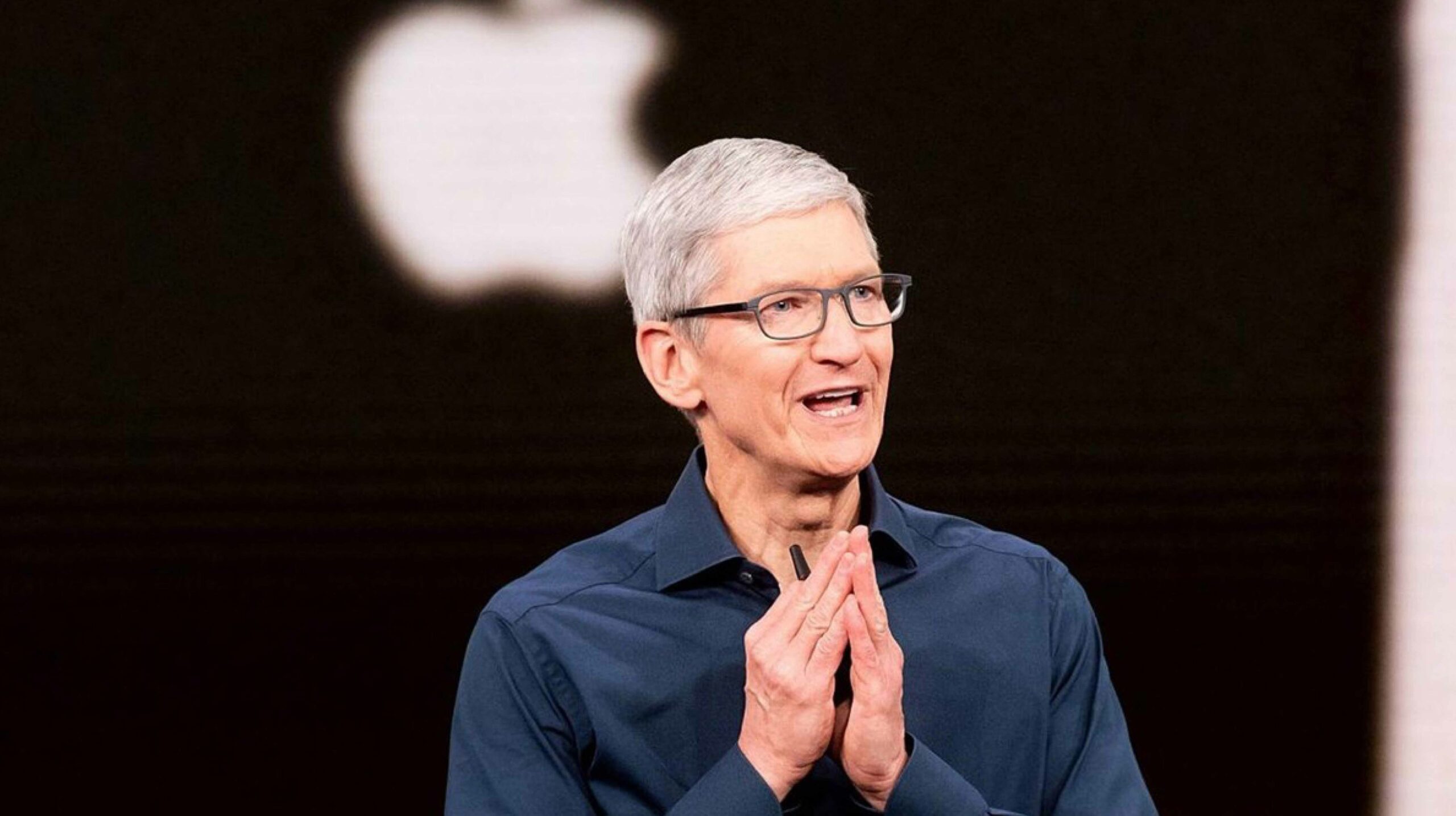
Some 52% of Employees Prefer The Hybrid Working Model: Apple Will Pioneer This Model in September
4 yearsago 0 Comments 2.1k Views
According to the McKinsey Report in April 2021, more than half of employees said that they would like their organizations to adopt more flexible hybrid virtual-working models, in which employees are sometimes on-premises and sometimes working remotely. So how do organizations help their anxious and burned-out employees? Let’s check it out and see how Apple works with their employees.
What’s a Hybrid Working Model?
The hybrid working model is a location-flexible arrangement, allowing employees to combine onsite and offsite work as they and their employers see fit.
As organizations look to the post pandemic future, many are planning a hybrid virtual model that combines remote work with time in the office. This sensible decision follows solid productivity increases during the pandemic.
In the US, 52% of employees said they would like their organization to adopt more flexible hybrid work models and work as per McKinsey research. Are organizations ready to accept the challenge? How can leaders overcome these issues to continue driving productivity, collaboration, and innovation?

52% of workers would prefer a more flexible working model post pandemic (McKinsey’s Research)
Current company cultures tend to favor employees who work onsite, and the skills required to lead in a face-to-face may not be the same in a remote or hybrid work model. Now that employees have tasted the sweet remote work for a long period, it is hard to accept an entirely onsite working model, given that they have seen how much time and resources are saved by working from home. 33% of employees even said that they are likely to switch jobs if they have to return to being fully on-site as per McKinsey’s research.
Some of the challenges when employees want to work remotely are:
- Remote workers are usually overlooked during meetings, especially when all the leaders are in the meeting room, onsite whiteboards and flip charts are used, and some issues discussed in the meeting room are not heard over the microphone.
- Promotions and assignments favor onsite employees. Quora’s CEO said in Quora’s blog that “in most companies, it is a significant career advantage to work from the headquarters rather than to work remotely. People in positions of power have a tendency to bias toward giving out opportunities to those whom they are familiar with.”
- Employees working from home get demoralized when they are left out of decisions and projects and receive less feedback and positive reinforcement from their immediate leaders
Apple Will Pioneer This Model in September
Apple signaled the ending of the pandemic era and dawn of a new day. The tech giant, with a global workforce of 137,000 employees, defied the crowd and hasn’t fully embraced remote work with the same gusto as its peers.

Tim Cook – Chief Executive Officer of Apple
In an email to staff, obtained by the Verge, CEO Tim Cook asked his staff to return to the office beginning early September. It’s expected that employees will spend about three days a week at the office and the other two at home or remotely.
The consensus, including the likes of Microsoft and Google, coalesced around a flexible hybrid model of having workers in the office for two or three days a week, similar to what Apple announced.
There are some outliers, like Spotify and Twitter, that will allow their people to work remotely “forever.” On the other side of the spectrum, top-tier investment banks Goldman Sachs and JPMorgan, along with Netflix, required all of their workers to return to their respective offices.
Leaders need to work on modeling certain aspects of the culture to make it more welcoming and diverse for remote, onsite and hybrid workers.
- Organize to work from home at least one day a week, and continue doing virtual events.
- Help improve the experience of remote workers during meetings by standardizing certain behaviors.
- Follow up with employees more closely to compensate for the lack of interactions and emotional cues.
- Improve facilitation and empowerment skills to enable team self-organization.
To Sum It Up
Covid-19 has disrupted the workplace so drastically and at such a rapid pace that going back to the pre-pandemic normal is not an option. Companies and leaders need to understand the new challenges, embrace them and adopt new behaviors to thrive in the new normal. There is no one-fits-all approach, but the new technologies allow for choosing the perfect option between the continuum.
According to Forbes
>> View more: The Future Of Work and The Need For Upskill And Reskill To Worker
>> View more: 3 Common Obstacles While The Teams Are Working Remotely And How The Management Level To Solve Them (Part 1)
——————
How do you think about this article? Please share it with us via the comment section below.
PRIMUS – TOP MANAGEMENT JOBS ONLY






